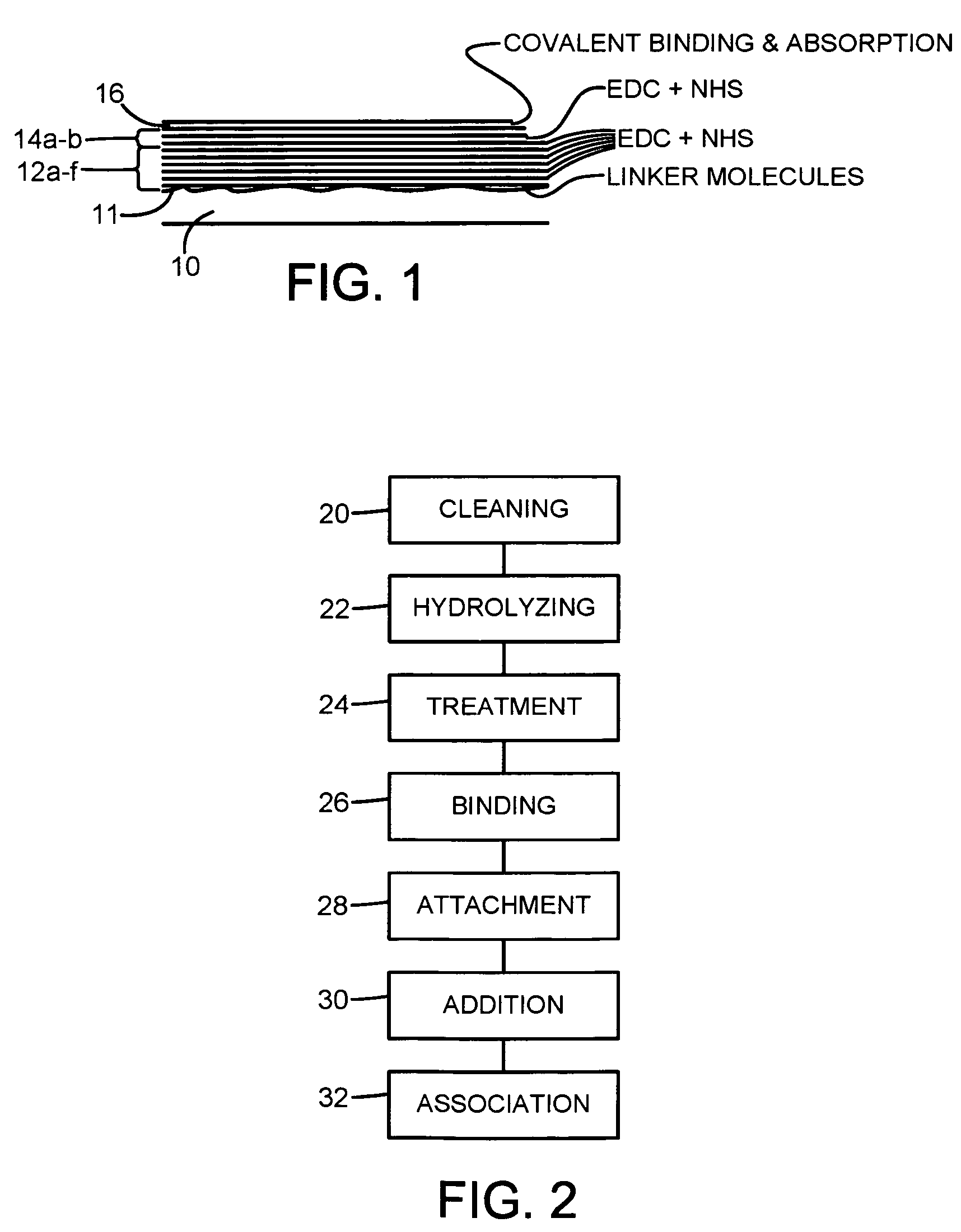Method for coating a suture
a biomaterial and suture technology, applied in the field of soft biomaterial coating, can solve the problems of long time-consuming medical practitioners, high risk of suture thread cutting through the tendon material, and softening of the tissue around the suture, so as to prevent the side effects of systemic stress, inhibit the gradual weakening or softening of the tissue surrounding the suture, and inhibit the effect of tissue weakening
- Summary
- Abstract
- Description
- Claims
- Application Information
AI Technical Summary
Benefits of technology
Problems solved by technology
Method used
Image
Examples
example
[0021] Suture materials made of e.g. polyamides such as nylon-6,6 and nylon-6, or poly(p-dioxanone) or polylactide / -glycolide, are cleaned according to standard laboratory practice for 10 minutes by incubation in 70% ethanol followed by copious rinsing in distilled water and dried in nitrogen gas followed by 30 seconds exposure to UV. The structure surfaces become hydrolyzed during typically 3 hours in distilled water and treated one minute in a Radio Frequency Plasma chamber. Radio frequency plasma treatment generates charged and chemically reactive surface groups onto which for example spacers or proteins can be covalently attached. For example, surface carboxyl or amine groups may be formed on the suture via the surface activation procedures.
[0022] Thereafter, a linker molecule such as glutaraldehyde or ethyl-dimethyl-aminopropylcarbodiimide (EDC) is bound to the surface. One layer of fibrinogen from 1 mg / ml solution, or another macromolecule, becomes covalently attached by the ...
PUM
| Property | Measurement | Unit |
|---|---|---|
| thickness | aaaaa | aaaaa |
| pH | aaaaa | aaaaa |
| thickness | aaaaa | aaaaa |
Abstract
Description
Claims
Application Information
 Login to View More
Login to View More - R&D
- Intellectual Property
- Life Sciences
- Materials
- Tech Scout
- Unparalleled Data Quality
- Higher Quality Content
- 60% Fewer Hallucinations
Browse by: Latest US Patents, China's latest patents, Technical Efficacy Thesaurus, Application Domain, Technology Topic, Popular Technical Reports.
© 2025 PatSnap. All rights reserved.Legal|Privacy policy|Modern Slavery Act Transparency Statement|Sitemap|About US| Contact US: help@patsnap.com

